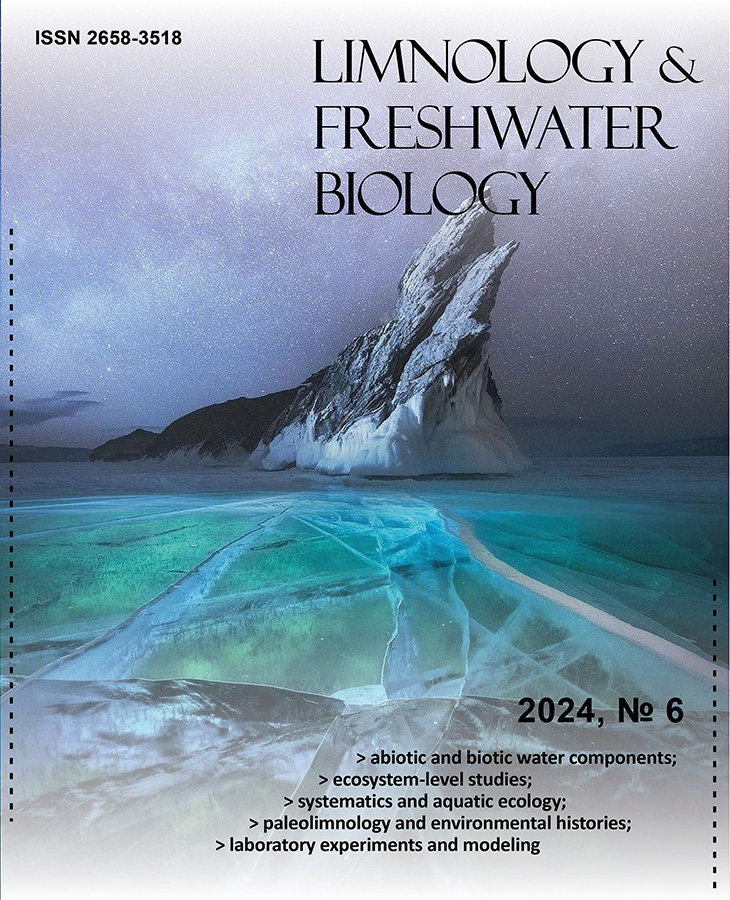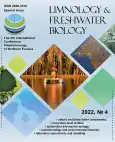Aleika section – an “aftersound” of the Baltic Ice Lake at the Northern Coast of the Sambian Peninsula
- Authors: Zaretskaya N.E.1, Ludikova A.V.2, Kuznetsov D.D.2, Lugovoy N.N.1,3
-
Affiliations:
- Institute of Geography of the Russian Academy of Sciences
- Institute of Limnology of the Saint Petersburg Federal Research Center of the Russian Academy of Sciences
- Lomonosov Moscow State University
- Issue: No 4 (2022)
- Pages: 1618-1619
- Section: Articles
- URL: https://journal-vniispk.ru/2658-3518/article/view/288373
- DOI: https://doi.org/10.31951/2658-3518-2022-A-4-1618
- ID: 288373
Cite item
Full Text
Abstract
We present the new data concerning the traces of the Baltic Ice Lake in the northern coast of the Sambian Peninsula, Kaliningrad region, Russia, based upon the studies of the Aleika section (lithostratigraphy, radiocarbon dating, plant macrofossil, diatom and LOI analyses).
Full Text
Introduction
The Baltic Ice Lake (BIL) was a huge proglacial water body that formed twice in front of the receding Scandinavian Ice Sheet during the deglaciation of the Baltic basin, the first, between 15 and 13 ka BP, and the second, during the Younger Dryas ice advance, ca. 12.8 ka BP (Björck, 2008). Though the configuration of both BIL stages was already reconstructed based upon various palaeoarchives in Scandinavian countries and Northern Europe (Uscinowicz and Zachowicz, 2003; Witkowski et al., 2017). Their position at the Sambian coast is still under discussion. In 2020-2022, we performed palaeogeographic studies of the northern coast of Sambian Peninsula, including lithostratigraphic observation of the sections, sampling for radiocarbon dating, LOI, diatom and plant macrofossil analyses, and DGPS survey. The Aleika section found during these studies provided new data on the BIL development and degradation in the Southeastern Baltic.
Materials and methods, results
The Aleika section (54.937051°N, 20.360373°E) is located on an abrasion cliff of the Baltic Sea 1.3 km west of the mouth of the Aleika River, within its catchment area, and exposes the remnant of a basin terrace; the total thickness of the exposed sediments is 2.4 m. The sedimentary succession includes 6 units (from bottom to top).
The Unit I (0.6-0.8 m a.s.l.) is composed of dark gray silt with rare inclusions of rock fragments (diamicton). An admixture of fine-grained sand is observed at the top of the layer (0.8 m a.s.l.) marking the possible wash-out of the till surface; LOI values are low (3-4%). Rare finds of freshwater, mainly planktonic diatoms point to unfavorable environments for their growth and accumulation, such as in a large proglacial lake. The silt is overlain with brown peat with wood debris (Unit II, 0.8-0.95 m a.s.l.) with a sharp contact. This unit was radiocarbon-dated to 13800-13100 cal BP. Plant macrofossil analysis showed the swampy environment with transition from the waterlogged birch forest with green mosses to peat bog with sedges and Bryales; high LOI values (up to 73%) are typical for sediments of lowland peat bog development under stagnant water conditions. Extremely low concentrations of siliceous microalgae remain, i.e. diatom valves and chrysophyte cysts could result from moisture deficiency suggesting terrestrial or semi-terrestrial environments. Thus, after an abrupt regression of the large proglacial water body before 13800 BP that eroded the surface of the Unit I, the swamp formed on the drained surface.
Unit III (0.95-1.3 m a.s.l.) sharply overlies the peat layer and is composed of greenish gray gyttja with plant fragments in the upper part. The upper part of the Unit was radiocarbon-dated to 12800 cal BP. Plant macrofossil analysis inferred the shallow-lake environment with characteristic plant composition (pondgrass and hornweed), algae and Cladocera. Only benthic species were observed in the diatom record with the predominance of small-celled periphytic Fragilarieacea, which also suggests shallow-water low-energy environments. Increased concentrations of diatom valves, chrysophyte cysts and sponge spicules indicate favorable conditions for the development of aquatic biota and accumulation of microfossils. The LOI values increasing from 11-14% to 20-22% are characteristic for an isolated productive lake.
Unit IV (1.3-2.5 m a.s.l.) is composed of light-gray very plastic silt with small wood fragments and interlayers of fine-grained sand and silt. The radiocarbon date 12150 cal BP was obtained at the level of 2.2 m. Plant macrofossil analysis showed the presence of different algae. Very low abundances of all groups of siliceous microfossils (diatoms, chrysophytes, sponge spicules) characterize the environments of the proglacial lake where nutrients deficiency, low water transparency and temperature limited the productivity of aquatic biota, while high input of suspended particles “diluted” the microfossil concentrations in the sediments. LOI values, however, are rather high for the proglacial lake (4-9%), and may indicate the environment of an inlet or a lagoon.
Unit V (2.5-2.7 m a.s.l.) sharply overlies the Unit IV and is composed of peat with silt and sand admixture, radiocarbon dated to ~400 cal BP. Plant macrofossils are represented by sedges and green mosses. Poor preservation of diatoms, predominance of fragments of freshwater benthic taxa and high abundances of grass phytoliths speak for high-energy environments near the lake’s shore. Increased LOI values (10-16 %) also points to the shallow-water zone of a large basin. Unit VI (2.7-3.0 m a.s.l.) at the top of the section is composed of medium sand forming dunes at the subhorizontal terrace surface.
Discussion and conclusions
Our results revealed two phases of a large cold basin transgression in the coastal zone of the northern coast of the Sambian Peninsula in the Late Glacial: before 13.8 cal ka BP and ca 12.8-12.0 cal ka BP. The presence of sand in the upper part of the diamicton in the Aleika section indicates that the till (possibly, stadial one) exposed at the bottom of the section was apparently subject to erosion. Similar moraine outcrops with the washed-out upper part were encountered along the entire northern coast of the Sambian Peninsula. The age of the organogenic layers overlying the till suggests that washing-out could occur in the coastal zone of the Baltic Ice Lake during the first stage of its development dated to 14 cal ka BP (Björck, 2008), and the peat of the Unit II was formed after the first BIL regression. The formation of the small lake and successive accumulation of gyttja 13.0-12.7 cal ka BP may reflect the increase of climate amelioration. The Younger Dryas cooling and expansion of the Scandinavian Ice Sheet caused another transgression of the BIL (Björck, 2008), and the area of the Aleika section was submerged again 12.7-12.0 cal ka BP.
After the second fast regression of the BIL at the end of Younger Dryas, this area of the northern Sambian coastal zone was the “stage” of alternating accumulation and erosion, which resulted in the huge gap in the sedimentary record until 400 cal years BP when the formation of peaty soil was interrupted by active aeolian processes that proceed by now.
The new data from the Aleika section enable tracing the evidences of the BIL along the northern coast of the Sambian Peninsula. This contradicts to the reconstructions of BIL coastal line 25-30 m below the present level of the Baltic (Uscinowicz and Zachowicz, 2003), and is in agreement with the reconstructions of L.Z. Gelumbauskaite (2009) who suggested the complicated configuration of the BIL shoreline, with numerous inlet bays and moraine isles appeared during the transgressive phases, and small separate depressions formed after regressions.
Conflict of interest
The authors declare no conflict of interest.
About the authors
N. E. Zaretskaya
Institute of Geography of the Russian Academy of Sciences
Author for correspondence.
Email: zaretsk@igras.ru
Russian Federation, 29, Staromonetny Lane, Moscow, 119017
A. V. Ludikova
Institute of Limnology of the Saint Petersburg Federal Research Center of the Russian Academy of Sciences
Email: zaretsk@igras.ru
Russian Federation, 9, Sevastyanov St., Saint Petersburg, 196105
D. D. Kuznetsov
Institute of Limnology of the Saint Petersburg Federal Research Center of the Russian Academy of Sciences
Email: zaretsk@igras.ru
Russian Federation, 9, Sevastyanov St., Saint Petersburg, 196105
N. N. Lugovoy
Institute of Geography of the Russian Academy of Sciences; Lomonosov Moscow State University
Email: zaretsk@igras.ru
Russian Federation, 29, Staromonetny Lane, Moscow, 119017; 1, Leninskie Gory, Moscow, 119991
References
- Björck S. 2008. The late Quaternary development of the Baltic Sea basin. In: Assessment of climate change for the Baltic Sea Basin. Berlin-Heidelberg: Springer-Verlag, pp. 398-407.
- Gelumbauskaite L.Z. 2009. Character of sea level changes in the subsiding south–eastern Baltic Sea during Late Quaternary. Baltica 22(1): 23-36.
- Uscinowicz S., Zachowicz J. 2003. The southern Baltic relative sea level changes, glacio-isostatic rebound and shoreline displacement. Polish Geological Institute Special Papers 10: 1-79.
- Witkowski A., Cedro B., Dobosz S. et al. 2017. Late Glacial to Holocene environmental changes (with particular reference to salinity) in the Southern Baltic reconstructed from shallow water lagoon sediments. In: Harff J., Furmańczyk K., von Storch H. (Eds.), Coastline changes of the Baltic Sea from South to East. Springer, pp. 175-193.
Supplementary files










